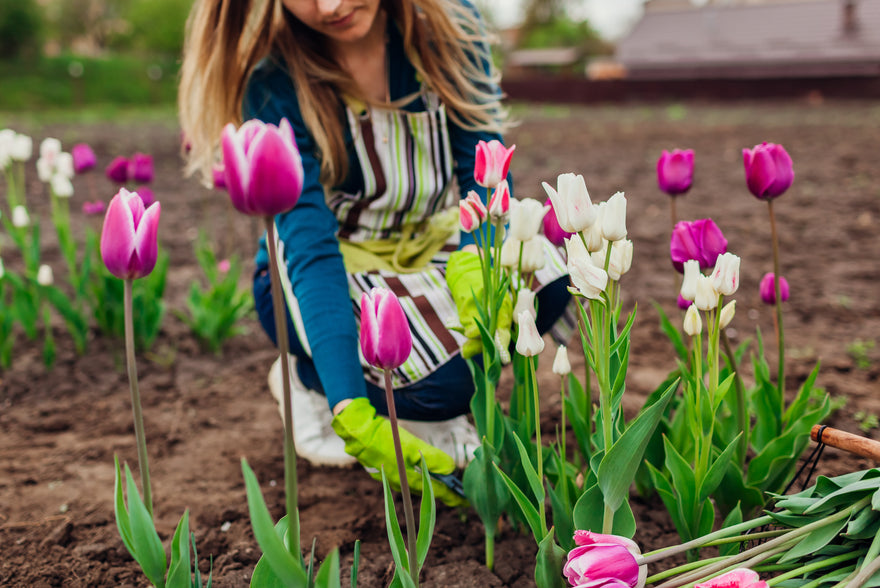
Flower bulbs — a guide to bulb planting and care
Who can resist the spring promise of cheery daffodils, or the exuberance of dahlias in full bloom? Nerines bring a surprise splash of colour in autumn, while amaryllis bulbs are a Christmas tradition in many households! These garden favourites are all grown from underground food storage organs, better known as bulbs.
Take a browse through our range and you'll soon discover that there are bulbs for every season, and almost any position in the garden, there are also some exotic treasures which can be grown indoors.
Why choose bulbs?
Most bulbs are low maintenance and easy to grow. There are some more challenging types too—perfect for anyone who likes to put their green fingers to the test and grow something rare or unusual. Whether you're planting borders, filling containers, creating natural looking meadows and woodlands, or starting an indoor jungle, there are no limits to using bulbs and you can let your imagination run wild!
Bulbs, corms, tubers and rhizomes
The word "bulb" is often used as an umbrella term for bulbs, corms, tubers and rhizomes, which make up a diverse range of plants. Although they are different, they have the same function of storing energy and food for the plant. When the growing conditions are right, the "bulb" (rhizome, bulb, tuber or corm) will supply the energy needed for the roots, foliage and flowers to regrow.
Bulbs — True bulbs are familiar to most gardeners. They will be rounded in shape with a flatter base and a pointed tip. Some will have a papery outer layer, but not all of them. They are formed by layers of scales, just like an onion. Some of the easiest to recognise bulbs include narcissus, tulips, lilies, alliums and hyacinths.

Corms — These often look similar to bulbs, but if you were to cut one open, you would discover that it is a solid mass rather than having separate scales. They also have a flatter bottom and one or more buds at the top. Examples include crocosmia, crocus, gladiolus, and freesias.

Tubers — These are swollen underground stems or roots which store nutrients for the next season's growth. Examples of plants which grow from tubers include dahlias, caladiums, ranunculus, anemones, and begonias. They generally have multiple growth points called buds or eyes, from which new growth will emerge.

Rhizomes — These swollen underground stems often grow horizontally in the soil. They are generally planted quite close to the surface of the soil or even with their rhizomes sitting at ground level like bearded iris. Familiar types include Lily of the valley, hedychiums, and cannas.

How bulbs are produced
Bulbs will have been through many growing seasons before they are a good size for supplying to gardeners as flowering bulbs. In many cases, the process includes planting immature bulbs in fields, lifting them after the growing season, removing any bulblets, replanting those and the mother bulbs, lifting them again after the next growing season, then repeating the process again and again for as many years as necessary.
This is why bulbs should never miss their planting time or be stored for too long, because they need to have this yearly growth cycle. Bulbs grow larger every year—the top-size bulbs we supply will have been through this laborious process more times than the smaller, cheaper bulbs. The larger the bulbs have grown, the better they bloom.
Bulb sizes
It is true that the bigger the bulbs, the better they perform. This is because bulbs grow bigger as they mature. It is in fact the maturity of the bulb which determines its performance. Bulbs within their size categories can vary in measurement slightly, but will be the same maturity and have the same vigour even when some bulbs in a batch are slightly bigger than others.
On our website, we show the size so you know roughly how big the bulbs are that you will receive. Industry bulb sizing differs depending on variety. Some, like colocasias and dahlias, are sized in groups, such as size 1 (being the largest available), size 2, size 3 and so on. Other varieties tend to be an approximate measurement, and this is usually a measurement in centimetres around the circumference of the widest part of the bulb. Bulb farmers and suppliers don't measure each individual bulb because this would take far too long. Instead, the bulbs are sorted into categories based on approximate size and maturity.
Among our range of ranunculus, for example, you may notice that the standard colours (Ranunculus 'White', 'Red', 'Pink' etc) are listed as size 7/+. This means on average they are approximately 7cm or more in circumference. The Italian ranunculus varieties are listed as size 2/3, this is approximately 2-3cm in circumference, which is a typical size for those varieties.

When to plant flower bulbs
Bulbs are usually planted when they are dormant so it's important to plan for the growing season ahead, and to plant them at the correct time of year. Unlike seeds, which have never been in growth and can store for years, all bulb types must be planted in the same season they are supplied. They can't be stored until the following year as they will simply deteriorate.
You can buy bulb varieties as potted plants at their flowering time, but this is a less rewarding way to enjoy bulbs. Buying ready-grown bulbs means they will provide instant impact, but this is more costly and their flowering is usually short-lived.
There are two planting seasons for bulbs:
Spring planting bulbs
— Summer flowering plants like lilies, dahlias, cannas, begonias and callas are supplied between late February and May for spring planting. Depending on their hardiness, they can all either be planted directly outdoors or started indoors between late February and late May. The earlier in spring you can get them started, the more advanced and ready for flowering they will be in summer.
— Tender and half-hardy varieties will need to be started in frost-free conditions, such as a greenhouse or conservatory. This protects them from cold weather in early spring. Tropical varieties like caladiums and colocasias require warm conditions to sprout, so they would prefer to be in the warmth of your home to start with.
Autumn planting bulbs
— Spring flowering varieties, such as bluebells, daffodils, tulips and crocus are supplied between late August and December should be planted in autumn between September and mid December.
— Some varieties do have preferences over when in autumn they are planted. For example, tulips are best planted in November or December when the soil is cold, which avoids the risk of tulip fire. Autumn-flowering varieties (also supplied in autumn), such as Crocus sativus and colchicums, need to be planted as soon as possible, ideally by early October.
— Anemones and ranunculus can be planted either in autumn or spring, but they should always be planted in the same season that you receive them while fresh. When planting anemones or ranunculus in autumn, they will flower in spring. If they're planted in spring, they will flower in summer.
Bulbs "in the green"
A few species (including bluebells, snowdrops and winter aconites) can also be transplanted after they flowered, while the foliage is still present. These are referred to as bulbs "in the green". Some gardeners believe that these will establish quicker than dormant bulbs, but in truth the main advantage is that these particular species can be planted in spring as well as autumn, giving gardeners a second opportunity to plant them each year. When good quality, large-sized dormant bulbs are supplied, they should establish at the same rate as bulbs in the green.
What to do when your bulbs arrive
Bulbs are supplied while they are dormant, making them easy to plant. We will always supply your fresh flower bulbs at the correct planting time, and it is important that they are planted within the same season that they are supplied, ideally as soon as possible.

On arrival, open the packaging straight away to allow fresh air to the bulbs. They should not be left in boxes in unopened packaging for long as this reduces fresh airflow and mould can form. Your bulbs should be firm and healthy with no soft or mushy areas. Towards the end of the planting season, some bulbs will already have started to produce shoots before they have been planted. This isn't a problem—simply plant them the usual way as soon as possible and they will continue to grow normally.
How to store bulbs before planting
Bulbs are best be planted as soon as they arrive while they are still fresh, but sometimes this just isn't possible. They can survive a few weeks in storage if necessary, although if you have received them towards the end of the planting season, they may not store well and should be planted as soon as possible. Bulbs, corms, tubers and rhizomes can't be stored until the following year and will deteriorate if left unplanted beyond their planting time.
If you need to store your bulbs for a few weeks, you will need to open up their paper packaging first. You can leave the bulbs in their opened packets and place them in a cool, dry, frost free and well-ventilated position. Be sure to prevent access by mice and other rodents that may enjoy nibbling them! A garage, shed, loft or cupboard often makes the ideal location.
Always keep an eye on your bulbs in storage. If you notice some are starting to turn soft, it's best to get them planted straight away before they all deteriorate.
Where to plant flower bulbs
There are bulb varieties to suit most locations, from free draining rockeries to damp woodlands, and grassy meadows to flower beds and patio pots. Choosing the right bulb for the growing conditions available will really pay off. Always check the recommended growing conditions for your bulbs as this will have a big impact on their success.
Most bulbs enjoy a sunny or partially shaded spot in moist but free-draining soil. If you're looking for plants to fill a specific area, such as a shady garden or an area with clay soil, suitable varieties can be filtered on our website. Using our website search filters will help you to make the right plant choices, which should in turn lead to plant success!
Half-hardy and tender plants will need frost-free growing conditions. You can plant them in pots and start them in a conservatory or greenhouse to plant out from May onwards. Alternatively, you can plant them directly outside from late April/early May once risk of frost has passed. Topical plants will need additional warmth to get started, so starting those in your home, heated greenhouse or warm conservatory is best.
How to plant flower bulbs
Planting bulbs into beds and borders
Bulbs can be planted in large swathes, blocks, groups or simply dotted around individually. It's necessary to ensure your planting area is prepared for bulbs. It may need to be dug over if it is compacted, and weeds removed first. If the soil is in poor condition, it's worth digging in some compost or mulch prior to planting. Before planting a big display is the ideal opportunity to dig in plenty of organic matter such as leaf mould, well-rotted manure or garden compost if needed.
Gracy says:
"Organic matter is great for breaking up a heavy clay soil and improving drainage. It works well to benefit a light, sandy soil, where it will retain moisture and replenish nutrients that are easily leached from thin soils."
For a mass planting of bulbs for a dramatic show throughout large beds then you can dig out a wide trench at the correct planting depth across the entire planting area. Space your bulbs exactly where you would like them, then simply backfill the soil over them. This will save a lot of time compared with digging individual planting holes!
When planting at wider spacings, will need to dig individual planting holes with a trowel or bulb planter. Bulb planters are particularly useful when dotting bulbs though areas of grass, which can be tough to dig with a trowel. When planting groups of bulbs in grass, you can use a spade to dig out a square. You can lift the square, position the bulbs in the hole and then put the square of soil and grass back on top.

Planting flower bulbs in pots
If you are planting bulbs in containers, choose a good quality, free draining multipurpose or John Innes Number 2 compost, unless otherwise specified in the growing instructions. You can plant multiple varieties in the same pot, which is often referred to as a "bulb lasagne".
Alternatively, you can also keep it simple and stick to one variety per pot. If planting multiple varieties in one pot, ensure they are all suitable for the same growing conditions. For example, a pot containing both shade-loving lily of the valley and sun-loving dahlias would not work.

Bulb planting depths
It always advisable to check the recommended planting depth for each variety in the planting instructions. Incorrect planting depth can result in failure to flower and may reduce the lifespan of your bulbs. Most bulbs and corms should be planted at a depth of roughly 2-3 times their own height, however there are of course exceptions to this rule.
Tubers and rhizomes vary greatly in their planting depths. Some should be planted shallowly at the soil surface while others need to be much deeper. Planting depth varies depending on specific variety, bulb size and conditions. You can find the correct planting depth for all varieties on our online planting instructions page.
Bulb aftercare
Aftercare depends very much on the type of bulb. Hardy perennial types can be left in the soil all year round, whereas tender bulbs need to be lifted and stored over winter in frost free conditions.
When planted in the correct location, most bulbs are reasonably low maintenance through the growing season and need minimal care aside from watering, to grow successfully and produce flowers.
Watering bulbs
All bulbs appreciate some water as soon as they have been planted, this settles the soil around them. It isn't essential if planting in autumn when the soil is already moist. For autumn planted bulbs, they will not need watering again through winter if they are outdoors. If they are in a greenhouse, they will only require watering when the compost feels almost completely dry. Once in growth in the spring, water bulbs in containers if you notice the soil feels dry. Most bulbs which are planted in beds and borders will receive sufficient water from natural rainfall during spring.
For spring planted (summer flowering) bulbs, water them as soon as they are planted and then leave watering until the top 2-3cm of soil starts to feel dry. Dormant bulbs don't need to be in wet soil all the time and would prefer to dry out slightly between waterings. You can water bulbs more frequently once in growth. Plants grown in containers are prone to drying out quickly and will certainly need extra water throughout the growing season.
Feeding
Most true bulbs such as tulips and daffodils won't need feeding in their first season, but in future years it is well worth providing an application of slow-release fertiliser or Blood, Fish and Bone organic feed when you see the first signs of growth.
Vigorous tubers and rhizomes such as cannas, dahlias and begonias appreciate regular feeds throughout the growing season (a balanced liquid feed can be applied every 10-14 days) however it isn't essential and they should still flower well without.
Supporting stems
Some bulbs and tubers grow into tall plants which may require a little extra support. The tall stems of dinnerplate dahlias will certainly benefit from a wooden stake beside them if they become weighed down by the flowers. Climbing species like gloriosa will need a trellis or an adjacent shrub to wind their twining leaf tendrils into as they climb. Stakes and vertical supports are always best positioned during planting, or early in the plant's growth, to avoid causing damage later on.
Deadheading
Removing faded flowers will keep the garden looking tidy. It also helps to redirect the plant's energy reserves to feed the bulb instead of producing unwanted seed. Dahlias in particular benefit from deadheading throughout summer as this will also promote more blooms!
Removing old foliage
Tidy gardeners may be tempted to remove the old foliage from spring bulbs as it begins to fade, but it's best to allow it to die back completely first. While the foliage is still green, it is still feeding the bulb before it enters its dormant period, ensuring that the plant will have enough energy to return next year. You can remove the leaves and stem once they have turned yellow or brown. The same applies to any summer flowering bulbs which end flowering while the leaves are still green, like Crocosmia.
Overwintering flower bulbs
Hardy bulbs can be left to die back naturally and re-emerge the following year with no special treatment. Half-hardy and tropical bulbs will need protecting from cold winter weather. Tropicals such as colocasias and caladiums can be brought indoors. If they are growing in pots then simply move the containers to a warm conservatory or heated greenhouse in early autumn.

Half-hardy species such as begonias and dahlias are a little tougher and will continue to flower well into autumn. Once the foliage is blackened by the first frosts, the tubers should be lifted from the soil and prepared for winter storage. This process involves trimming away the old stems and brushing off any remaining soil. Leave them in a dry, ventilated spot for a few days to dry out a little. Then simply wrap the tubers in a loose layer of newspaper, and store them in a cool, dry, frost free place—well out of reach of mice and other rodents! Alternatively store them in crates with a little dry compost. Remember to label the different varieties so you know which is which next spring.
Dividing flower bulbs
Many perennial bulbs like daffodils, nerines and crocosmias are great naturalisers and will multiply in the soil, forming large clumps. If the clump is larger than you would like, they can be divided into smaller groups. This should be done while the bulbs are dormant—the clump can be lifted, separated into smaller clumps (pull the bulbs apart by hand if possible, or cut through with a spade for really dense clumps). These smaller clumps or separated bulbs can then replanted with a little more space between them.
Bulb problems
Critters
The biggest problem with bulbs, rhizomes, corms and tubers is that they can be appetising to critters like mice and squirrels. If that becomes a problem in your garden, it is worth planting into pots which can be kept somewhere critter free until the bulbs have sprouted. Once they have sprouted, they are no longer appealing to rodents and can be transferred out into the garden. Another method is to cover pots or planted areas with chicken wire.
Rotting
Bulbs can rot in wet soils. If you have a heavy soil type with a high clay content, it will be water retentive which means that over winter your bulbs can start to rot in the soil. The best way to overcome this is to dig in mulch every year to slowly improve the overall consistency of the soil. In the short term, a good handful of grit in each planting hole will help.
Slugs and snails
They can cause damage to any plants, not just bulbs, but they do particularly love dahlias. If you notice slug damage, you can try putting wool pellets around your plants. Alternatively, you can keep your dahlias potted in a greenhouse until they are large enough to withstand some slug damage on the lower leaves.
Aphids
In case any of your plants are attacked by aphids, try welcoming natural predators into your garden before resorting to chemicals. Ladybird larvae are very effective aphid predators—they eat hundreds of them every day. Ladybird larvae can be sourced online rather than waiting for them to make their own way to your garden, greenhouse or polytunnel. Increasing biodiversity in your garden by making it a wildlife friendly space is the best long-term way of naturally tackling inflated numbers of pests like slugs and aphids. It's good for the planet too!






















































































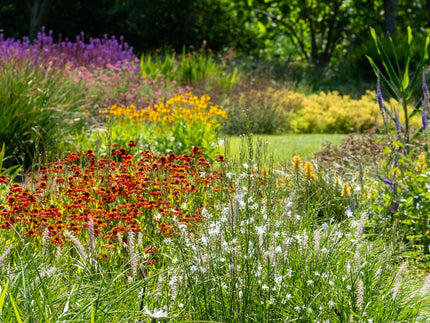
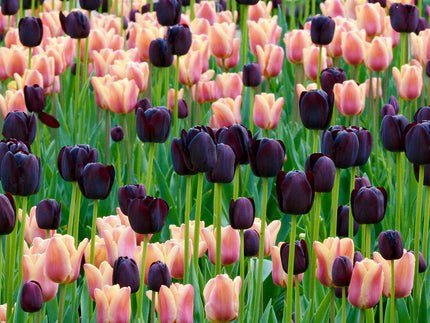
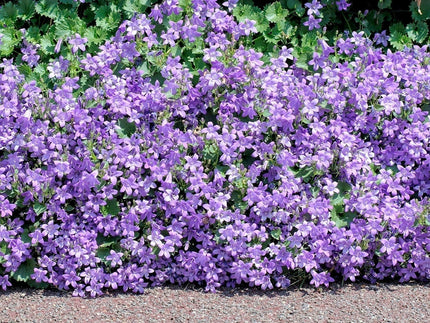
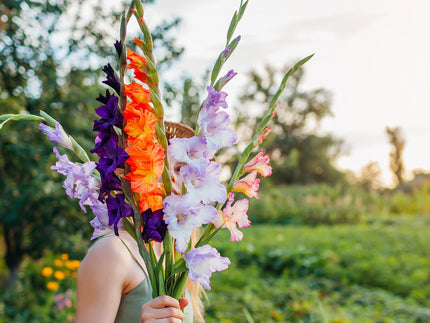
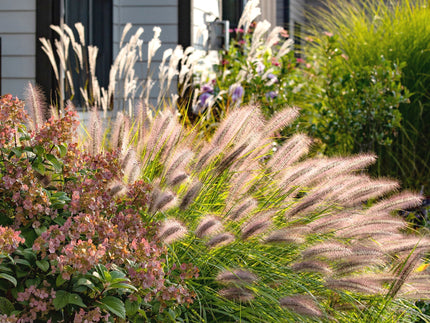
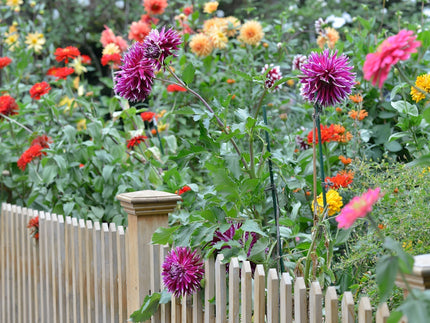
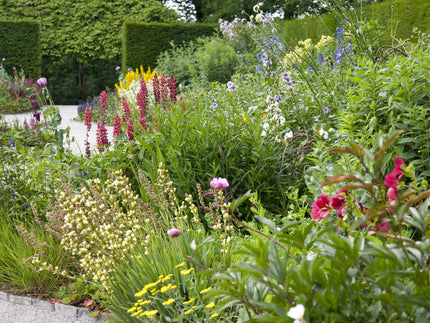
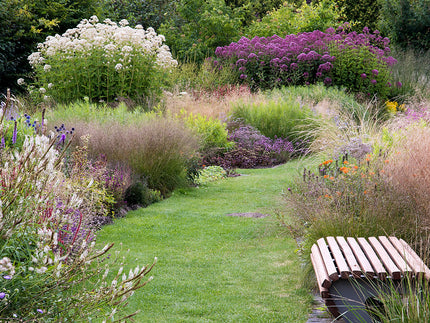
1 comment
Very good information. Ì have gained a great deal of knowledge of what I’ve been doing wrong. Fingers crossed this autumn and winter I will have a nice looking garden. Thank you for all this valuable information.